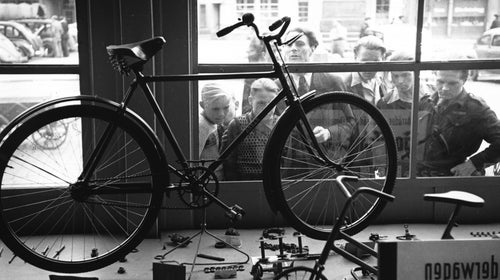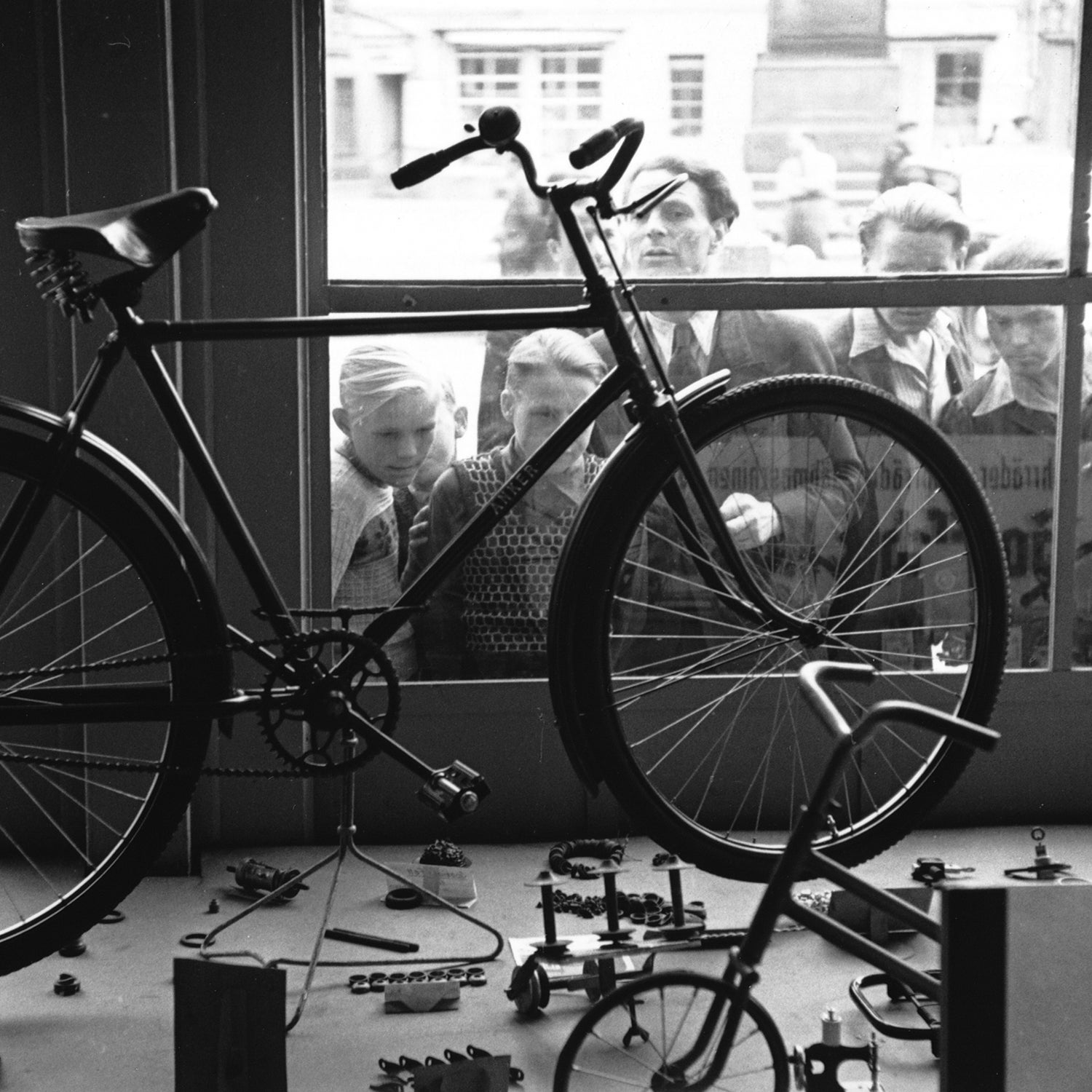Bike companies get a lot of crap. Mostly, they get it from their own customers, who complain about things like increasingly expensive products and ever-changing component standards. With regard to the latter, the go-to example is generally the bottom bracket, which in recent years went from a relatively simple threaded affair to a creaky bulbous press-fit nightmare.
I’m guilty of giving the bike industry crap myself. As something of a traditionalist who prefers weird stuff like steel frames and mountain bikes without suspension, every time another bike company discontinues a rim-brake model or eliminates a mechanical transmission I die a little bit inside. I also tend to recoil from the marketing approach of bigger brands, whose media embargoes, splashy product launches, and extraordinary performance claims—30 percent stiffer! Sixty percent more aero! Seventy five percent more bike-tastic!—are often the antithesis of what I find compelling about cycling.
And now the bike industry is giving itself crap, too. Recently some major players including Simon Mottram of Rapha, Mike Sinyard of Specialized, and Peter Woods of Dorel signed onto a “.” In it, they pledged to “create products that will last longer,” and to “work with customers on maintenance and lifetime extension,” among other things. This was ironic, it would seem, when for so long we’ve been told that when it comes to performance, the envelope must always be pushed (Specialized’s motto is “Innovate Or Die”) and that adding one additional cog is reason enough to upgrade your drivetrain, if not your entire bike.
As someone who prizes longevity over innovation in my cycling equipment, I should have felt vindicated by this pledge. Here it was, my moment! Instead I felt…bad for them. Sure, they may compel you to covet their carbon wonderbikes, but in the realm of corporate greed and international villainy, bike companies don’t even register. For example, according to ,” they generate about as much greenhouse gas as 65,000 passenger cars–which sounds like a lot, until you consider that Americans alone buy over 40,000 cars per day, according to Statista. In other words, if we stopped buying cars for two days we’d more than offset Trek’s annual emissions. (Okay, fine, if we stopped buying cars for two days we’d just make up for it on day three, but don’t overthink it.) More importantly, these companies make bikes—or in the case of companies like Rapha, stuff to wear while you’re riding bikes. They’re not making awful stuff that kills us like opioids or chemical weapons or microwaveable gluten-free burritos. They’re making bikes and sundries, arguably the most noble products in the world!
Also, my own preference for classical equipment notwithstanding, they happen to be doing a really good job. Whatever your cycling needs, there’s a company out there that’s ready to meet them. Not too long ago, your choices from the big bike companies mostly boiled down to, “road or mountain?” If you wanted something else, you got it custom, or maybe through some distributor that got weird parts from Europe. Now, these same companies offer complete bikes that range from purpose-built race machines to capable commuters to cargo bikes. Mongoose, most commonly associated with department stores, will even sell you . And sure, it’s easy, if not irresistible, to ridicule and decry the idea of —until you consider the same company will happily sell you with many of the same features at only a sixth of the price.
But what about the pledge to “create products that will last longer?” The drive to innovate has certainly resulted in plenty of orphaned components and broken frames over the years, though overall the bike industry has done a fantastic job in that regard. There aren’t too many cars from 1990 on the road, but it’s not even remotely noteworthy to see people pedaling around on 30-year-old bicycles. Even in the age of carbon fiber, it’s not unreasonable to think this will continue to be the case. Moreover, the profound simplicity and durability of even the most “advanced” bicycles—and the passion so many of us have for them—means there are lots of smaller companies and distributors out there making the parts we need to keep our older bikes on the road. I’ve been riding lately and I can’t think of a part on it I couldn’t replace relatively easily and cheaply. The same will likely hold true for plenty of the bicycles being produced today.
Of course, what really takes many bikes and components out of service isn’t obsolescence or failure–it’s boredom. You’ll likely start feeling New Bike Itch long before whatever you’re riding today becomes unusable. So should the bike industry commit to no longer coming up with cool new stuff we all want? Certainly not, because if it operated on that basis we’d all be riding penny-farthings. Quick release axles, derailleur drivetrains, aluminum rims…all of these things started out as cutting-edge performance innovations but ended up making bikes better for just about everybody. So it’s up to us cyclists to not buy new stuff and to ride our current equipment into the ground, though this solution ignores two important truths: 1) It’s human nature to want stuff; 2) Many of us are riding our stuff into the ground anyway. Plus, people dispensing with bikes with plenty of life left is arguably a good thing, because it creates more inventory for those of us who are savvy enough to look to the used market.
So keep up the great work, bike industry. I shouldn’t have to tell you this, but you’re not destroying the planet. You may not be perfect, but you’re definitely not the problem, either. I and millions of others owe a lifetime of riding to you, oversized bottom brackets and all.


